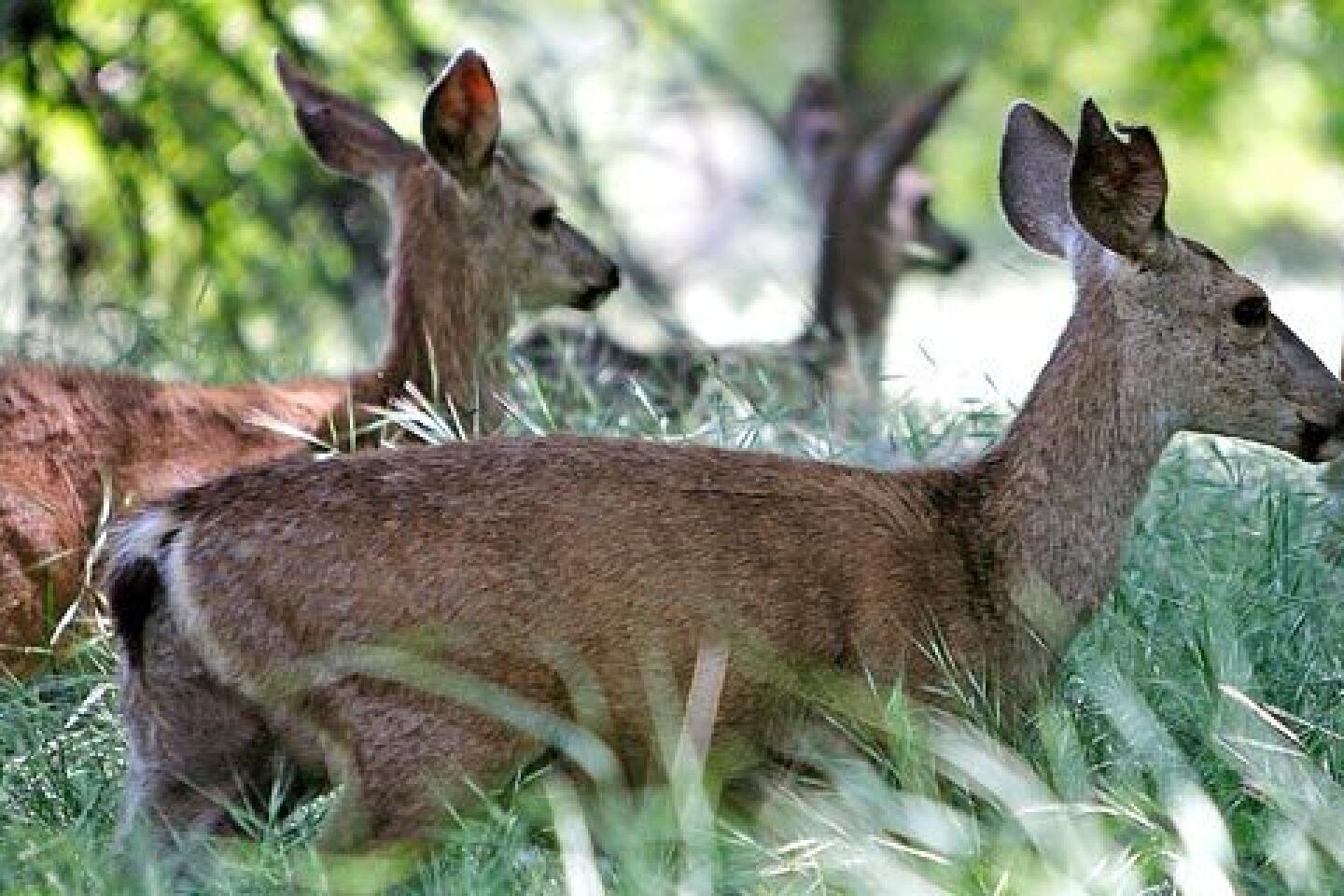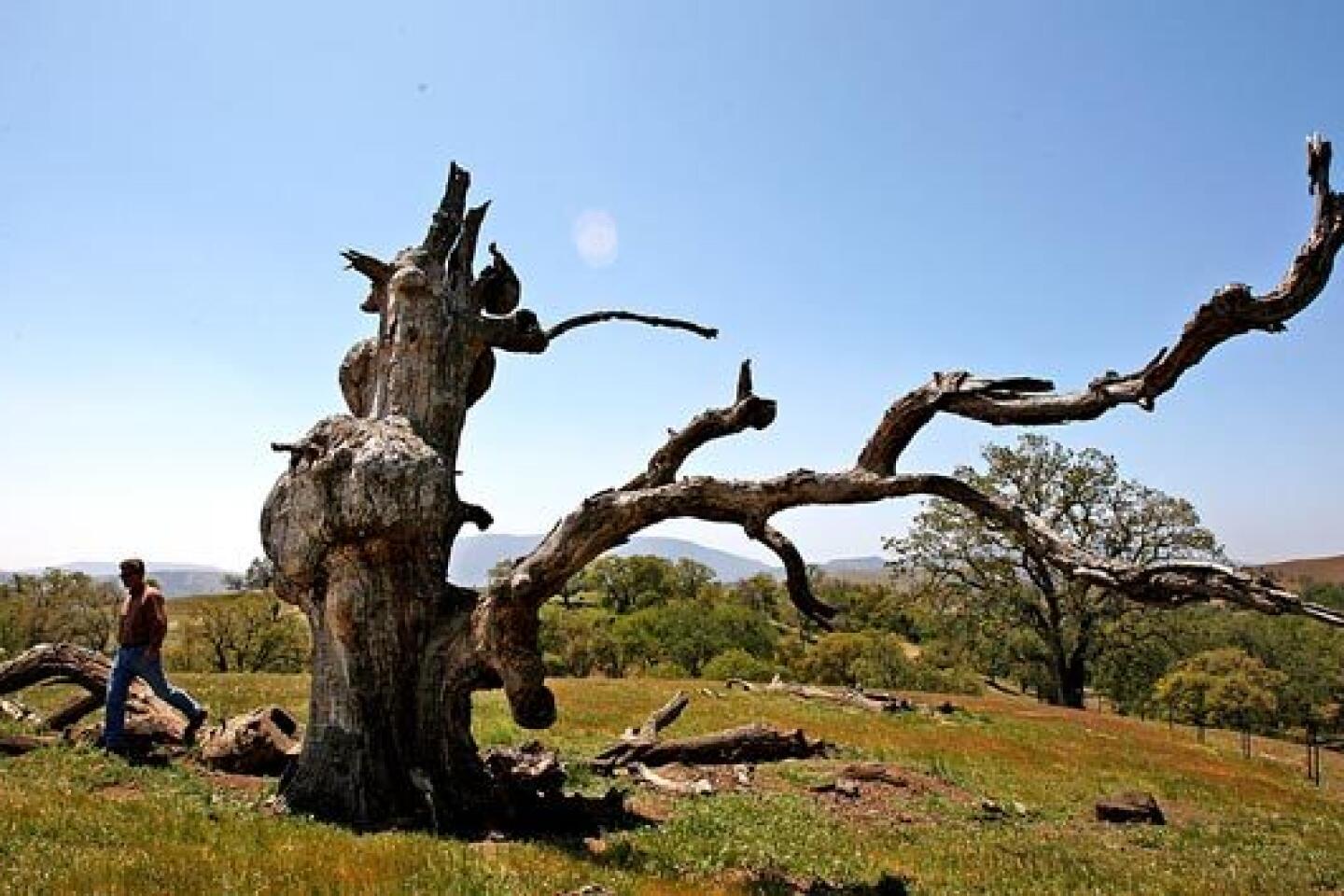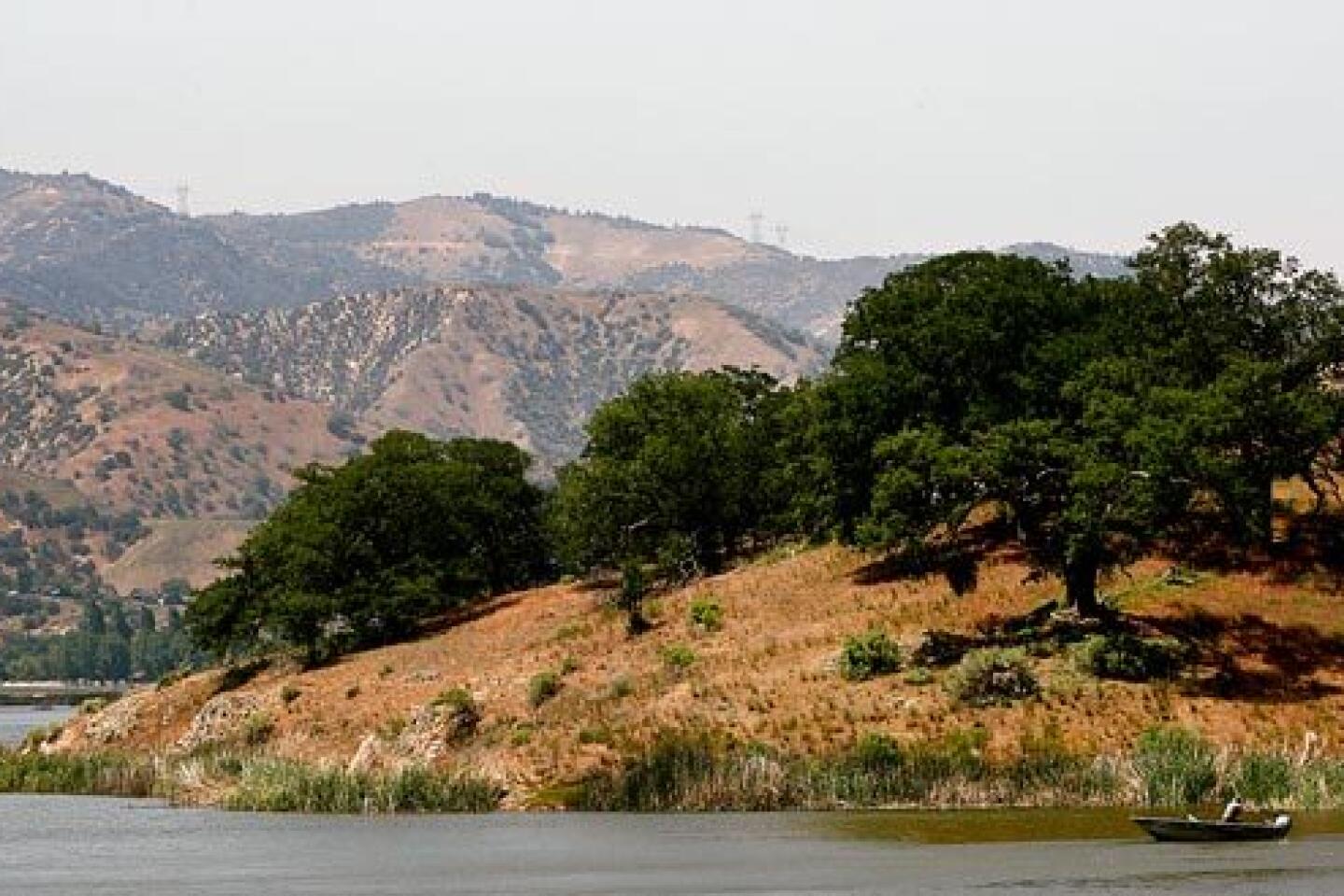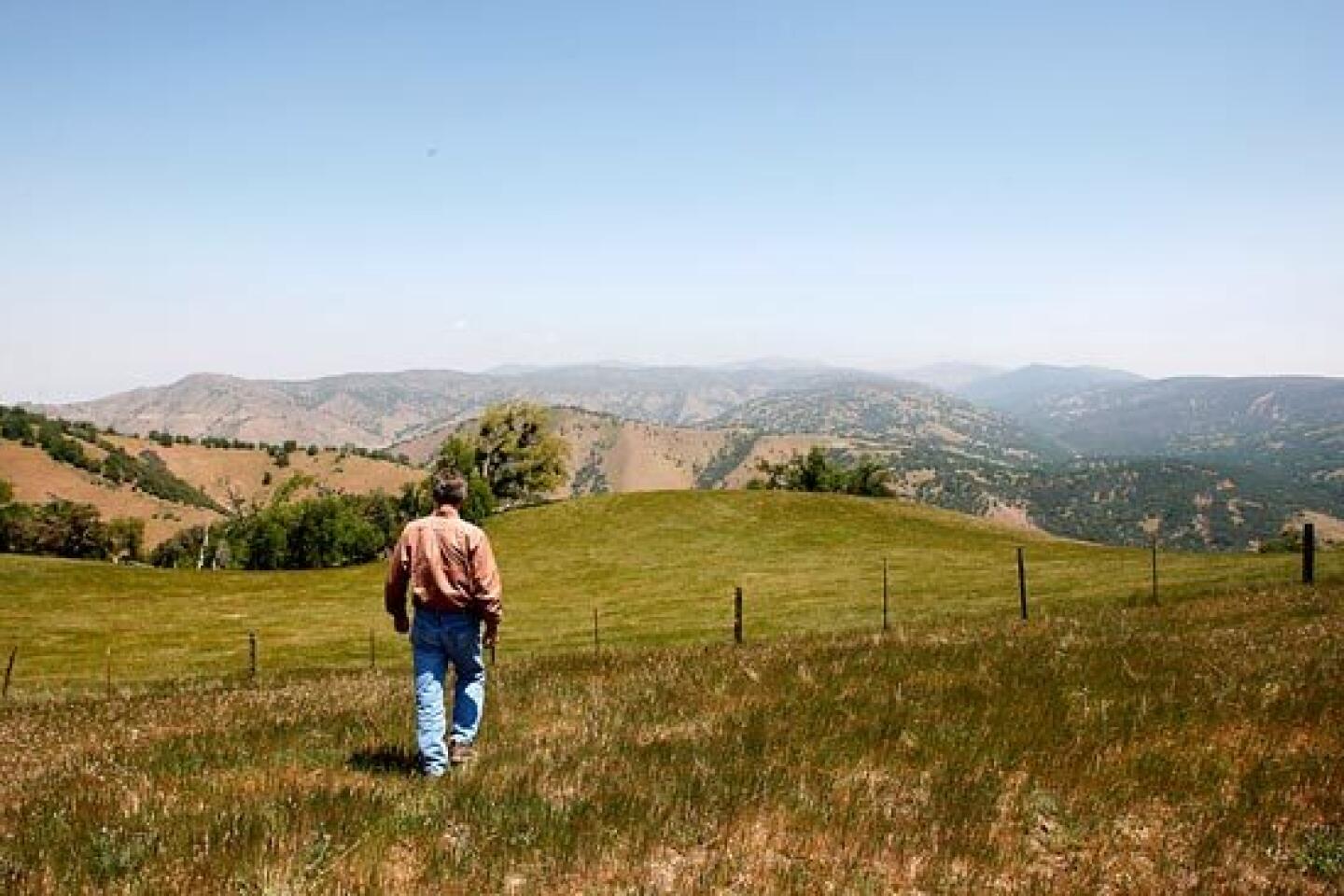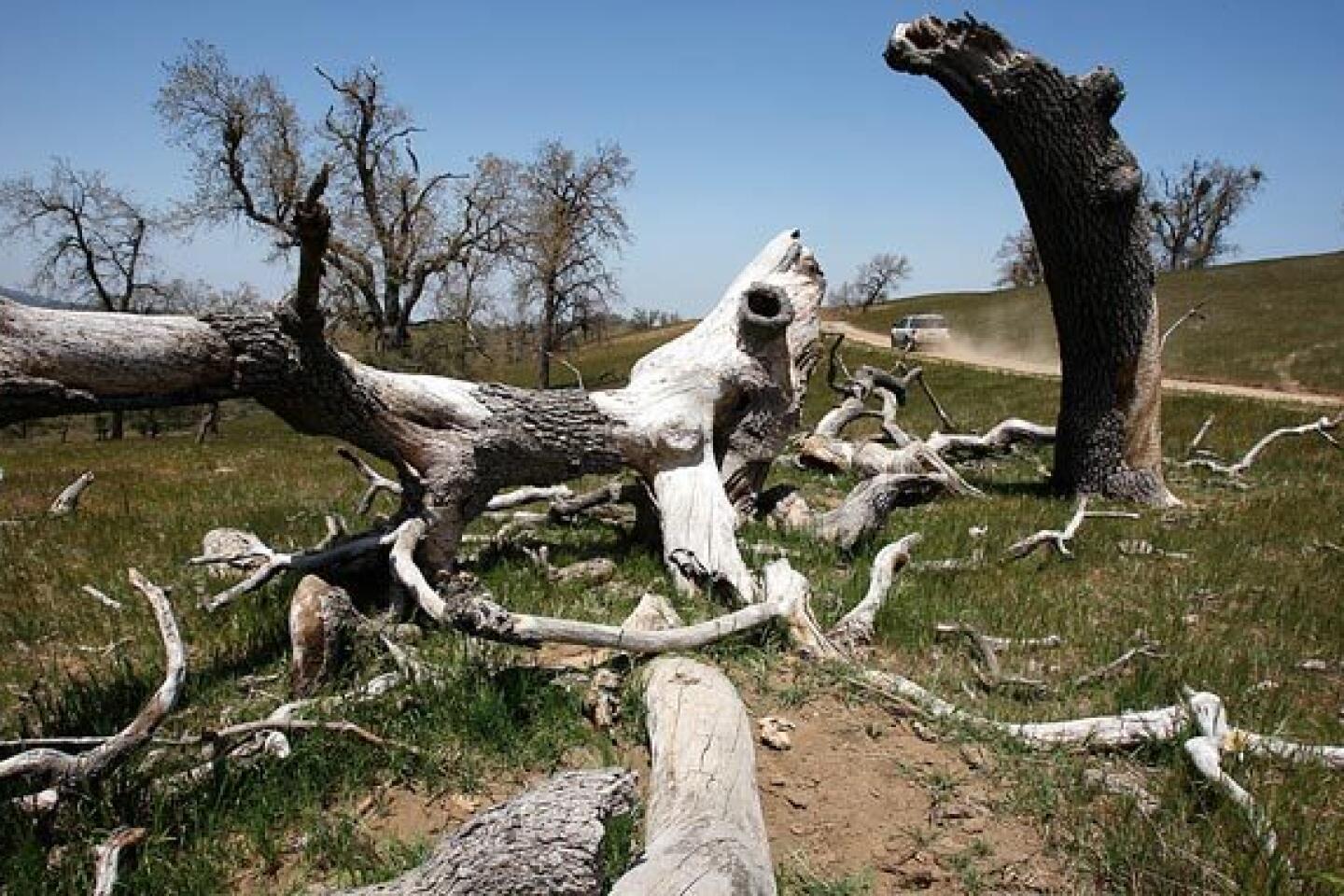Tejon Ranch pact would allow 26,000 homes on the range
A coalition of environmental groups and a developer have agreed on a landmark plan to conserve 90% of the largest chunk of privately owned wilderness remaining in Southern California.
The agreement ends years of debate over the fate of an untrammeled tableau of mountains, wildflower fields, twisted oaks and Joshua trees in the historic Tejon Ranch in the Tehachapi Mountains, about 60 miles north of Los Angeles.
The developer, the Tejon Ranch Co., has agreed to set aside 178,000 acres and provide an option for public purchase of 62,000 additional acres -- 49,000 to create a state park, 10,000 to realign a 37-mile segment of the Pacific Crest Trail through the heart of the wild lands and the rest to provide docent-led tours of sensitive habitat. It also will pull back development plans along some ridgelines considered crucial to the California condor.
In exchange, a coalition led by the Natural Resources Defense Council, the Sierra Club, Audubon California, the Planning and Conservation League and the Endangered Habitats League will not oppose the company’s plans to build three urban centers, including more than 26,000 homes as well as hotels, condominiums and golf courses at the western and southwestern edge of the ranch.
Those groups and others had threatened a campaign against development of the property, saying it would extend Southern California’s suburban sprawl to the Central Valley, add to regional traffic and air pollution woes, and harm endangered species such as the condor.
The pact was the second major truce among environmental groups and developers in as many months in Southern California, where such projects can be tied up in court for decades. Last month, conservationists struck a deal with a Houston oil company that would allow for offshore drilling this year in exchange for early retirement of several large-scale oil facilities along an otherwise pristine coastline in Santa Barbara County.
In a prepared statement, California Gov. Arnold Schwarzenegger said the success in reaching the Tejon agreement underlines how “we can protect California’s environment at the same time we pump up our economy.”
Some environmentalists expressed reservations about the accord, to be announced today. Ilene Anderson, a biologist and spokeswoman for the Center for Biological Diversity, said her group remains worried about habitat for the condor.
“So while we support significant open space,” she said, “it’s precedent-setting that critical habitat for a species just brought back from the brink of extinction would be written off for development.”
Eight times the size of San Francisco, the unfragmented 270,000-acre property embraces the juncture of four ecosystems: Mojave Desert grasslands, San Joaquin Valley oak woodlands, Tehachapi pine forests and coastal mountain ranges.
Like Louisiana Purchase
The 165-year-old ranch, first cobbled together by Edward Fitzgerald Beale, was owned for decades by an investment group led by former Los Angeles Times owner Harry Chandler and land developer Moses Sherman.
“For Southern California, this is the ecological equivalent of the Louisiana Purchase,” said Bill Corcoran, senior regional representative for the Sierra Club. “It is the only place in the region where within a few minutes a visitor can ascend from Joshua tree woodlands to oak-filled canyons on up to vast plains with views across the coastal range.”
Permitting for residential and commercial development of the remaining 30,000 acres is expected to be easier with the agreement, although plans still must be approved by state and federal regulatory authorities, as well as Los Angeles and Kern counties, according to Robert A. Stine, president and chief executive of Tejon Ranch Co.
“Our vision has always been to preserve California’s legacy and provide for California’s future, and this agreement does exactly that,” Stine said in an interview. “It’s good for conservation, good for California and good for the company and its shareholders.”
Finding common ground between the nation’s most powerful environmental groups and the Tejon Ranch Co. wasn’t easy.
“We’ve come a long way from where we started,” said Joel Reynolds, senior attorney and director of the Southern California Program of the Natural Resources Defense Council. “This was an extremely complicated deal, but also a once-in-a-lifetime conservation opportunity.”
The agreement guarantees Tejon Ranch Co. the right to proceed with massive development projects near Interstate 5: Centennial, a planned community of 23,000 homes east of Quail Lake in northern Los Angeles County; and Tejon Mountain Village in southern Kern County, which will include a resort featuring spas and boutique hotels, commercial space, golf courses and 3,400 estate homes. The Tejon Industrial Complex in the Kern County portion of the ranch is already home to IKEA’s 2-million-square-foot main distribution warehouse, among others.
In each project, Stine said, “a whole set of design parameters will be reviewed by all parties to ensure that all development activity that takes place will consider all green opportunities into the future; that means transportation, building and landscape materials, water usage. Everything.”
The agreement also creates an “independent Tejon Ranch Conservancy” composed of 12 members appointed by the company and its environmental partners to manage the preserved land in perpetuity. The company will provide about $800,000 a year for seven years to get the conservancy off the ground. Later, it will be funded through transfer fees from the sale of residential properties.
“It’s not enough to simply set aside land,” Reynolds said. “We also need an entity whose focus is restoration and conservation.”
Tejon Ranch remains a vast wildlife stronghold where deer, elk, bobcat and wild turkey flourish. Canyon bottoms are full of oaks. Along old lumber roads edging the brows of hills, flocks of wild pigeons rise. On the uplands, pine and cedar hold their own, and golden eagles ride warm air currents from coastal mountains to the Sierra.
Graham Chisolm, director of conservation for Audubon California said, “There is probably no more important property for the future of the California condor.” Only a week ago, he said, roughly half of the 38 California condors in Southern California were foraging on the property.
4 ridgelines spared
A key to unlocking the stalemate was the developer’s agreement to pull back from four of five northern-facing ridgelines, including one hemming scenic Bear Trap Canyon, that are prime foraging grounds inside critical California condor habitat.
“By removing the potential obstacles that have plagued similar development efforts in California, we’ll be able to move ahead with the entitlement processes on our current development projects in a much more timely fashion,” said Michael H. Winer, portfolio manager for Third Avenue Management, Tejon’s largest shareholder, and a member of its board of directors.
The company had been seeking an “incidental condor take permit” from the U.S. Fish and Wildlife Service, which would have relieved it of liability in the event that its projects were linked to the death of any of the endangered raptors. However, the company recently determined that such a “lethal take permit” was no longer needed given the reconfiguration of development plans under the agreement.
Reynolds, of the Natural Resources Defense Council, said he was satisfied that the condor would be protected under the new plan.
“The condor is a very high-profile species, and there’s been significant public investment in its recovery,” he said, “and throughout these negotiations an enormous amount of attention was paid to ensuring that this agreement would be consistent with its recovery, and we believe it does so.”
More to Read
Sign up for Essential California
The most important California stories and recommendations in your inbox every morning.
You may occasionally receive promotional content from the Los Angeles Times.
